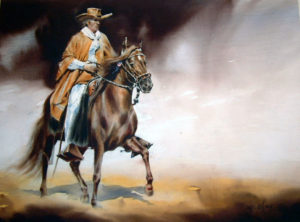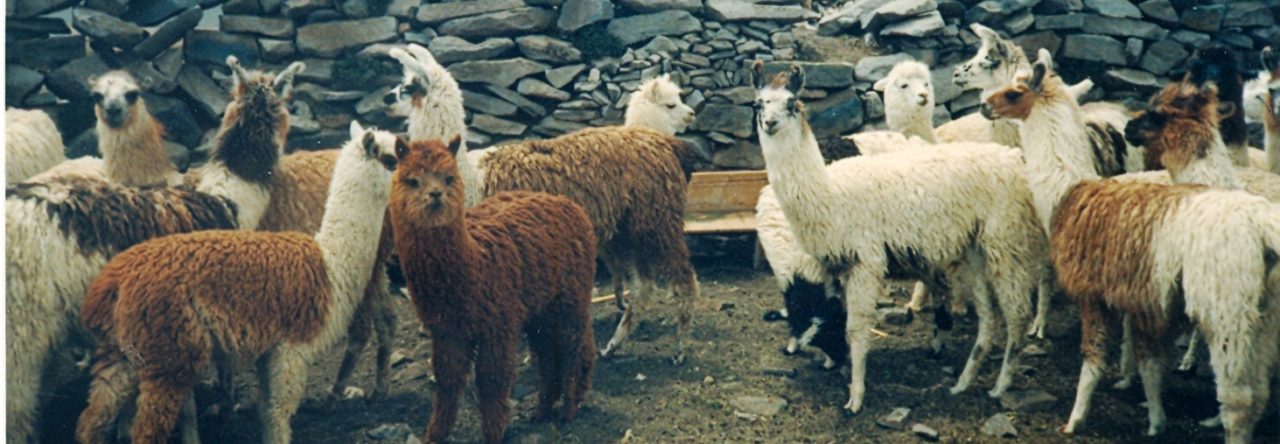
When I was preparing the photographs for “A Vet in Perú” I searched to find a good picture of a caballo de paso with its rider, but could find nothing to compare with the watercolour by Evaristo Callo Anco, which demonstrates clearly what the sport is about. When you look at the rider you can see ‘stillness’ even with the horse is going full tilt. The rider wears a broad-brimmed hat, a silk neckerchief, a poncho, long spurs, and his feet are held in box stirrups. All this is clearly seen in Evaristo’s painting. The rider must seem to be motionless, and he controls the horse with his finger tips on the reins. Normally four horseman form a team and they perform in unison and demonstrations usually end with the horse lined up facing the audience. The set off at full speed towards the watchers and at the very last moment the horses swerve away, seemingly of their own accord.
The caballo de paso does not trot, but ambles. For the trot the diagonal legs move together, but for the pacings horse it is the legs on the same side that move, making for a very much smoother ride. The horse ridden by cowboys in the United States are quarter horses with a similar action to the caballo de paso; this enables the rider to spend the whole day in the saddle.
There is a much more detailed description in “A Vet in Perú”, the sales of which have been poor, despite the good critiques it has received. If you do not wish to own a copy of this book, could I please ask you to request a copy from your local library. To date there have been no critiques posted on the Amazon.com website: who will be the first ?
